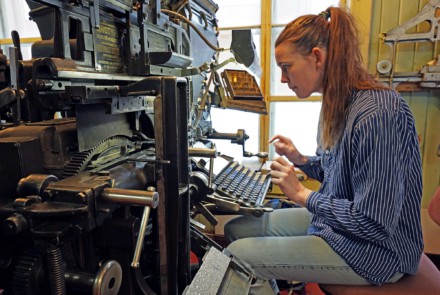From Jan Erik Øvergård
Press Museum Fjeld-Ljom, Røros, Norway
In our Press Museum we have a collection of four working hot metal type setting machines, two Linotype and two Intertype, ranging from 1933 to 1963 in production year. This is probably more than 50% of the working machines in Norway. We are fortunate to have within our museum’s association a few volunteer workers skilled in maintaining and using these machines. Problem is that even skilled technicians get older.
We assume that around Europe a number of printing museums are in the same situation as we are. Recruiting and training people to self confidence in maintaining and using type setting machines is not an easy task. The people that learned this in their early days of letterpress education, and later on in daily work in newspapers and printing houses, are mostly now in their seventies or eighties. We have to face the fact that our museums in some years will lack the day to day help from these skilled workers in maintaining our machines. We need to recruit younger people to be able to keep our machines running.
Through our work with younger recruits to the Press Museum Fjeld-Ljom, we have learned that they are interested first and foremost in printing presses. Art students, designers, printshops focusing on letterpress, they all go for using printing presses, setting type by hand and not so much using hot metal typesetting machines.
For us, producing a yearly museum newspaper on the old equipment, the type setters are vital. Without at least one of the Linotypes and Intertypes in working order, we can’t produce standard size lead based text in volume.
In the bigger picture, if this knowledge dies with the few people still being able to maintain and run the machines, our museums will no longer be as valuable and rich in presenting ancient history as they are today.
The total number of working typesetting machines in Europe is probably not that high. And we should most definitely look at this as a common problem we need to face together, instead of trying to solve this with recruiting new type setting experts at each museum. What we in fact need is a handfull of experts that can travel round Europe and maintain these machines and give part time operators the basic training.
There are no doubt skilled people out there, and also people interested in learning how to maintain and work with these machines. But we need to organize these in a way so that we all can benefit from these resources. There is also of course a cost issue in this picture, and I assume that it would be easier to get funding for training and keeping up to date knowledge if we work with this together.
Someone needs to start organizing this on a European basis. Could this be a task for AEPM?
